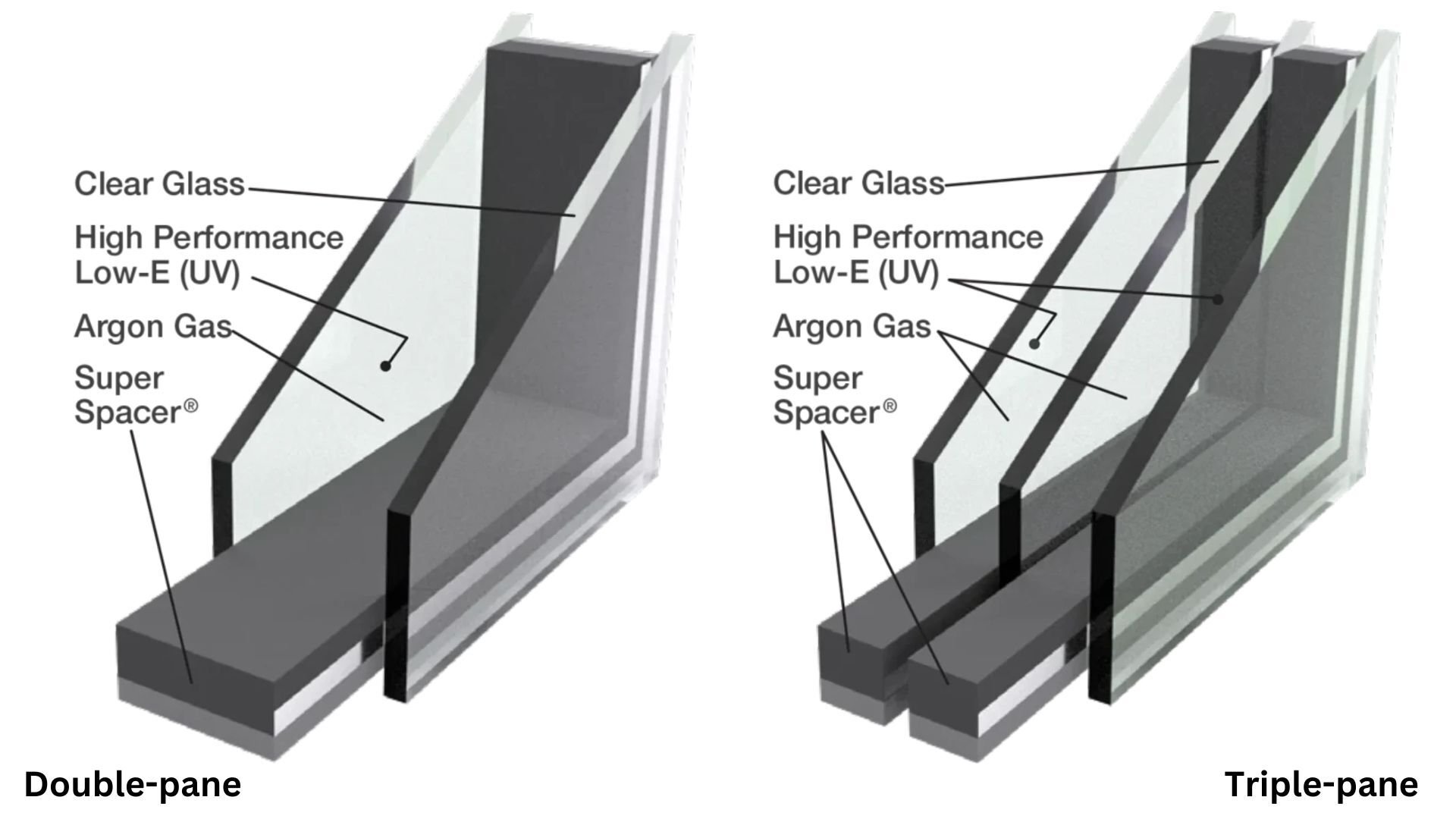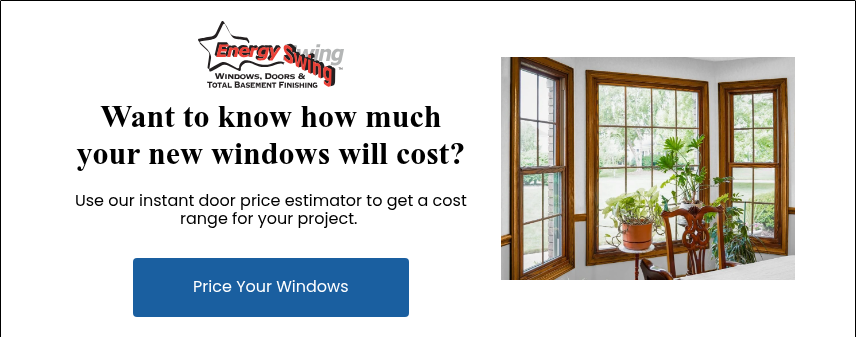What is the Thickness of Glass Used in Most Residential Replacement Windows?
June 5th, 2025
4 min read

If you’re shopping for replacement windows, you’ve probably heard this advice: “Get thicker glass, it’ll keep your home warmer and your energy bills lower.”
Sounds simple, right? Unfortunately, it’s one of the most common window myths out there, and one that could cost you more without delivering the results you expect.
At Energy Swing Windows, we’ve helped thousands of Pittsburgh homeowners choose the right windows for our four-season climate, and glass thickness alone is rarely the deciding factor in performance.
In this guide, we’ll break down what glass thickness really does (and doesn’t) affect, and show you the key features that actually impact energy efficiency, comfort, and durability. That way, you can make the smartest choice for your home and budget.
How Thick is the Glass in Replacement Windows?
Many homeowners are surprised to learn that it’s not just one layer of glass that matters. Modern insulated glass units (IGUs) include multiple panes and spacers that contribute to overall thickness and performance.
Here’s a quick look at common glass thicknesses used in residential replacement windows:
| Window Type | Typical Glass Thickness per Pane | Notes |
|---|---|---|
| Single-Pane (older windows) | ~3mm (1/8") | Outdated; not energy efficient |
| Double-Pane (standard IGU) | ~3mm to 4mm (1/8" to 5/32") per pane | Most common modern option |
| Triple-Pane (high-performance IGU) | ~3mm to 4mm per pane | Extra layer for better insulation |
Note: Spacer bars between panes also add to the total thickness of the insulated unit, which can vary between ~1/2" to 1".
Does Glass Thickness Actually Impact Energy Efficiency?
A common misconception is that simply having thicker glass equals better energy efficiency. In reality, several factors work together:
-
Number of panes: double-pane is standard, triple-pane for extra efficiency
-
Low-E (low emissivity) coatings: reflect heat and UV rays
-
Gas fill (argon or krypton): insulates between panes
-
Spacer bar quality: reduces thermal bridging
That said, thicker glass can also provide:
-
Better sound reduction (great for busy streets or noisy neighborhoods)
-
Improved durability and security
-
Resistance to thermal stress cracks (important in climates with temperature swings — like Pittsburgh!)
What Glass Thickness is Best for Pittsburgh Homes?
Here in Pittsburgh, homeowners face a 4-season climate with cold winters, hot summers, and plenty of temperature variation throughout the year.
So what’s the best choice? It depends on your specific home and goals.
For more Pittsburgh homes, double-pane insulated glass (~3-4mm per pane) is a great glass selection. There are a few important factors you want to make sure the glass has.
-
Low-E coating(s)
-
Argon gas fill
-
Warm-edge spacer system
This offers a balanced combination of energy efficiency, noise reduction, and affordability, and is perfectly suited to most local homes, whether you're upgrading old single-pane windows or replacing aging double-pane units.

When Should You Consider Getting Triple-Pane Glass?
- Homes in especially noisy areas (busy streets, near train tracks)
- Homeowners focused on maximum energy efficiency (triple-pane helps push U-values even lower)
- New construction or major remodels where performance is prioritized
- Larger homes with expansive glass walls, where heat loss is a bigger concern
Curious what your window upgrade might cost? Use our free Replacement Window Pricing Estimator to get a quick estimate. No obligation.
When might it be overkill?
- Smaller homes where the cost ROI may be lower
- Older homes where other elements (insulation, wall construction) limit total performance
- Homes where budget is a bigger concern, and double-pane windows still offer excellent results
For most Pittsburgh homes, double-pane is ideal, but in specific situations, triple-pane is worth discussing. Our team can help you evaluate what’s right for your home.

Should You Replace Just the Glass — or the Entire Window?
Sometimes, homeowners ask if they can replace just the glass rather than the full window unit. Here’s when that makes sense and when it doesn’t:
When Glass-Only Replacement Makes Sense:
-
The window frame is in excellent condition (recently installed, no rot or damage)
-
The seals around the glass haven’t failed (no fogging or condensation between panes)
-
You’re dealing with minor glass damage (scratches, small cracks)
When Full Window Replacement Is the Better Choice:
-
Your windows are single-pane: replacing just glass won’t fix energy loss
-
Glass is foggy or has condensation between panes → failed seals
-
Window frames are drafty, damaged, or outdated
-
You want the best long-term energy savings and warranty protection
What Are Long-Term Cost Considerations:
While replacing just the glass might seem less expensive up front, it often isn’t the best long-term value. Modern replacement windows offer:
-
Better insulating frames
-
More advanced glass options
-
Comprehensive warranties (whereas glass-only often isn’t warrantied the same way)
-
Higher resale value
Want to learn more about the costs involved? Check out our guide to Understanding Replacement Window Costs.
How to spot failed seals:
-
Fogging between the panes that won’t wipe away
-
Water droplets trapped inside the window unit
-
Cold drafts or noticeable temperature differences near windows
If you see these signs, it’s time to replace the entire window unit, not just the glass.

Is It Okay to Mix Double- and Triple-Pane Windows in One Home?
Another common question we hear:
“Can I mix double-pane and triple-pane windows in different parts of my home?”
Technically, yes. Many homeowners do choose to install triple-pane glass in high-traffic rooms (like a front-facing living room or bedroom facing the street), while using double-pane glass elsewhere.
But there are a few things to consider:
-
Aesthetic differences: Triple-pane windows can sometimes appear slightly thicker or tinted due to the added pane and spacer. This Can be noticeable when comparing windows.
-
Performance consistency: For maximum home efficiency, sticking to one high-performance window package ensures all windows contribute equally to your home’s comfort and energy savings.
Our advice: If your goal is to maximize ROI and appearance, we generally recommend choosing a consistent glass package for the whole home. But in some cases, strategic upgrades to specific rooms can make sense.
Need Help Choosing the Right Windows for Your Pittsburgh Home?
At the end of the day, glass thickness alone won’t determine how energy efficient or comfortable your home feels, and that’s one of the biggest window shopping myths we see.
Here in Pittsburgh, where homes face everything from icy winters to hot, humid summers, it’s the whole window system that makes the difference: pane construction, Low-E coatings, spacer systems, gas fills, and frame quality all work together to deliver real, measurable results.
Now that you know what glass thickness can — and can’t — do, your next step is to start exploring real pricing for your project.
Use our free Replacement Window Pricing Estimator to see what’s possible for your home and budget.
And of course, if you’d like expert advice and personalized recommendations, we’re here to help. Contact Energy Swing Windows today for a no-pressure consultation and let’s find the right window solution for your Pittsburgh home.



